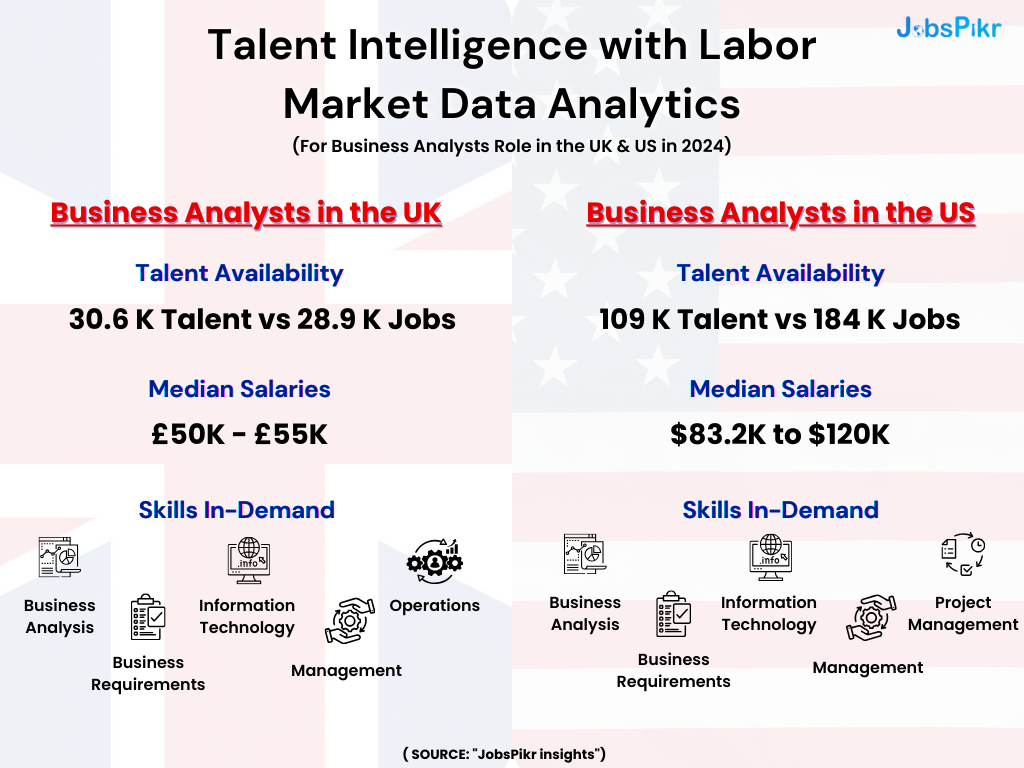Are you truly utilizing labor market data to drive your recruitment and workforce planning? In a rapidly evolving job market, relying solely on intuition is no longer enough. Labor market data analytics provides crucial insights into talent availability, skills gaps, and competitive hiring practices. By leveraging these insights, organizations can make strategic, data-driven decisions that keep them ahead of the competition and align their workforce strategies with market realities.
Talent Availability in the UK & US

Let’s take an example of the job role of Business Analysts:
UK Business Analysts: The UK market shows 30.6K business analysts available versus 28.9K job openings, indicating a relatively balanced talent pool. To remain competitive, businesses should offer salaries between £50K and £55K. Essential skills include Business Analysis, IT, Management, and Operations.
US Business Analysts: In contrast, the US market reveals a higher number of 109K available business analysts against 184K job openings. This saturation emphasizes the need for attractive salary packages, ranging from $83.2K to $120K. Key skills in demand are Business Analysis, IT, Management, and Project Management.
Talent Intelligence with Labor Market Data Analytics
Talent intelligence involves using labor market data to gain insights into talent trends and workforce dynamics. By analyzing this data, organizations can:
- Identify Skills Gaps: Understand the discrepancies between the skills available in the market and the skills needed for business growth. This allows for targeted training and recruitment efforts.
- Optimize Hiring Strategies: Craft competitive offers based on market salary benchmarks and skill demands, enhancing your ability to attract and retain top talent.
- Enhance Workforce Planning: Make informed decisions about workforce needs, future hiring plans, and talent development strategies.
Importance of Talent Intelligence
Incorporating talent intelligence into your hiring strategy can significantly impact your organization’s success. It enables businesses to proactively address skills shortages, adjust compensation packages to stay competitive, and align hiring practices with market trends. As competition for skilled professionals intensifies, using data to inform your talent strategy ensures that you remain agile and ahead of industry shifts.
Conclusion
Labor market data analytics is a powerful tool for understanding and navigating the complexities of the talent landscape. By leveraging these insights, organizations can enhance their recruitment strategies, address skill shortages, and gain a competitive edge in the market.
Explore how labor market data can transform your talent strategy – Sign up to JobsPikr Today!


